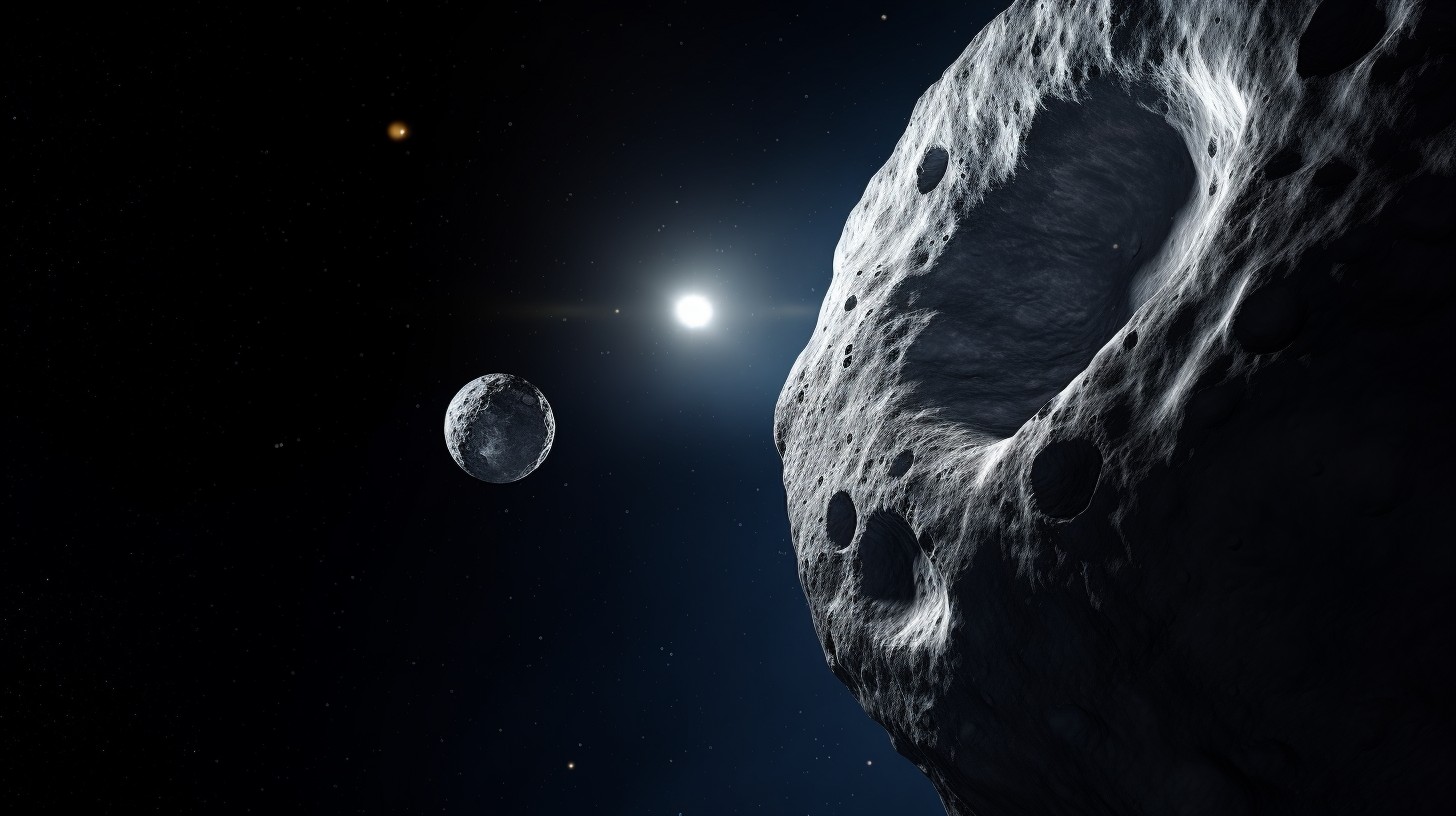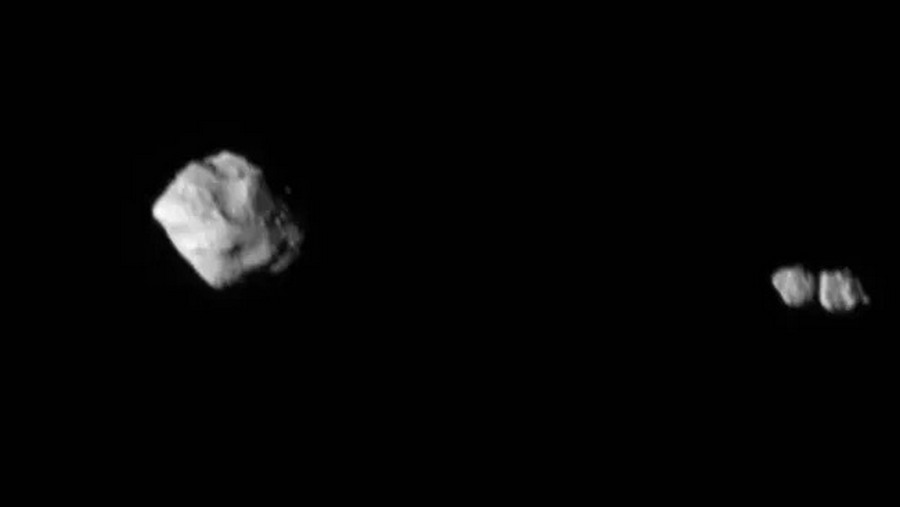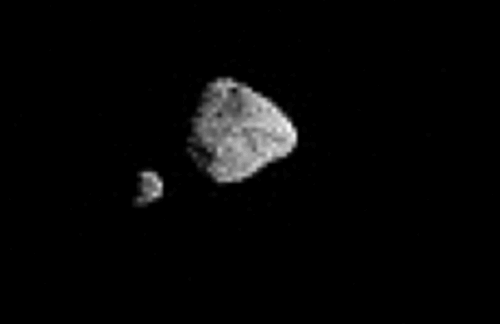Asteroid Dinkinesh, explored by the Lucy spacecraft on the way to the Trojan asteroids of Jupiter, continues to bring scientists new surprises. The first unexpected discovery associated with it was that it turned out to be a binary system. It turned out that a small natural satellite orbits around it. But the discoveries did not end there.

On November 7, NASA announced that the Dinkinesh’s moon is also part of a binary system known as a “contact-binary”. That is, the asteroid does not consist of two objects discovered a few days earlier but of three components. The discovery raised additional questions in the scientific community.

The principal investigator of the Lucy mission, Hal Levison, admitted that this discovery was really shocking, raising numerous questions about the origin and nature of Dinkinesh and its moons. It is especially striking that the moons have a similar size.

Scientists previously guessed that triple systems were quite common in our Solar System. But such a variant as Dinkinesh and his moons has never been observed before. According to the scientific director of the Lucy project, John Spencer, it is surprising that these objects form such a complex system.
Lucy’s next stops
Lucy’s mission has only just begun, but it has already managed to make such an impressive discovery. Dinkinesh and its moons are just one of many “stops” on the probe’s path. The spacecraft will have time to visit several asteroids during its 12-year mission, including the asteroid Donaldjohanson in 2025.

After that, the probe will return to Earth in December 2024 for a gravitational maneuver and then continue its flight, exploring Trojan asteroids in Jupiter’s orbit. The mission will be the first to be able to study these objects. They are important relics that can help reveal the secrets of the early days of our Solar System and possibly provide important information about the origin of life on our planet.
Earlier we reported how Lucy impressed us with a stunning view of the Earth from a distance of 620 thousand kilometers.
According to Space
Follow us on Twitter to get the most interesting space news in time
https://twitter.com/ust_magazine

